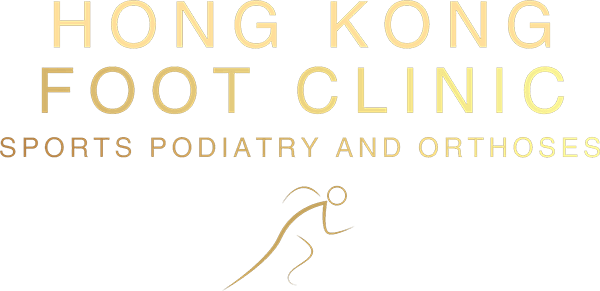
The hormonal changes that accompany perimenopause and menopause can bring unexpected challenges to women’s health, including foot problems that may arise for the first time. Many women visit podiatrists for foot pain that appears without an obvious cause, lingering far longer than expected. The culprit often lies in hormonal fluctuations, which affect the body in ways we might not anticipate. Here, we explore how these changes impact foot health and how pediatric care can help manage and prevent discomfort.
The Hormonal Connection to Foot Health
The primary hormonal changes during menopause involve a decline in oestrogen, progesterone, and testosterone. Each of these hormones plays a vital role in musculoskeletal health.
Oestrogen is crucial for maintaining collagen production, which keeps ligaments, tendons, and joints strong and flexible. It also supports bone density and vascular health. Testosterone aids in building and maintaining muscle mass, while progesterone regulates fluid balance. As levels of these hormones drop, changes in foot health can become more apparent.
Common Foot Conditions Linked to Menopause
During perimenopause and post-menopause, many women experience foot pain that persists longer than usual. Common conditions seen by podiatrists include:
- Plantar Fasciitis: Inflammation of the tissue on the bottom of the foot, causing heel pain.
- Bunions and Toe Deformities: Changes in foot structure due to weakened ligaments.
- Stress Fractures: Weakened bones are more prone to small cracks from repetitive stress.
- Neuromas: Thickened nerve tissue causing pain between the toes.
- Tendinopathies: Inflammation or degeneration of tendons, leading to pain and stiffness.
These conditions often arise because declining hormone levels weaken bones, ligaments, and muscles, making them more susceptible to injury. Additionally, foot posture may change over time, increasing strain on certain areas and prolonging recovery from minor injuries.
Assessing Foot Health: The Biomechanical Approach
When assessing foot pain or injury, podiatrists conduct a comprehensive biomechanical evaluation. This involves analysing how the foot moves in relation to the rest of the body. For example:
- Does the foot excessively pronate (roll inward), leading to collapsed arches?
- Is there insufficient shock absorption due to supination (rolling outward)?
- How do these movements affect the alignment of the knees, hips, and pelvis?
Understanding these interactions helps identify potential issues and develop targeted interventions to address both the immediate problem and prevent future complications.
Solutions for Managing Menopause-Related Foot Pain
1. Custom Foot Orthotics:
Custom orthotics are tailored shoe inserts designed to provide support, redistribute pressure, and improve foot alignment. Unlike generic arch supports, custom orthotics are crafted to fit the individual’s foot shape and address their specific biomechanical needs. They help relieve pain from conditions such as plantar fasciitis and bunions, while also preventing further injury.
2. Footwear Assessment and Guidance:
Proper footwear is crucial for foot health, especially during and after menopause. Shoes that once felt comfortable may no longer provide adequate support. Podiatrists assess footwear and recommend styles that offer appropriate support, cushioning, and fit. Supportive shoes that cradle the foot help alleviate pain and prevent further issues.
3. Hands-On Therapies:
In addition to orthotics and footwear adjustments, podiatrists may employ therapies such as:
- Massage: To relieve muscle tension and improve
- Joint Mobilisations and Manipulations: To restore range of motion and reduce pain.
- Dry Needling: To release muscle knots and improve function.
- Shockwave Therapy: To stimulate healing in chronic conditions such as plantar fasciitis.
4. Exercise Programs:
Customised exercises help strengthen foot muscles, correct imbalances, and enhance stability. These programs are tailored to address the individual’s specific condition and prevent further complications. Exercises targeting the lower legs and feet can significantly improve mobility and reduce pain.
Addressing Skin and Nail Health Changes
Hormonal changes during menopause can also affect skin and nail health. Reduced oestrogen levels can lead to dry, thin skin and brittle nails due to decreased moisture retention and collagen production. This makes the skin more prone to calluses and increases the risk of fungal infections.
Podiatrists can help manage these changes with regular foot care and recommendations for high-quality foot-specific moisturisers. Additionally, early treatment of nail issues, such as fungal infections, can prevent them from becoming more severe.
The Importance of Early Intervention
While foot changes during menopause are common, pain should never be accepted asa normal part of ageing. Seeing a podiatrist at the first sign of discomfort allows for early intervention, reducing the risk of chronic issues and maintaining mobility and quality of life. Regular pediatric care can help women navigate this stage of life with confidence and comfort.
In conclusion, although menopause can bring unexpected foot challenges, podiatrists offer effective solutions to address and prevent these issues. From custom orthotics and footwear advice to targeted therapies and exercise programs, comprehensive foot care can keep you moving comfortably through this transition. Your feet carry you through life’s journey-take care of them to ensure you keep stepping forward with confidence.










